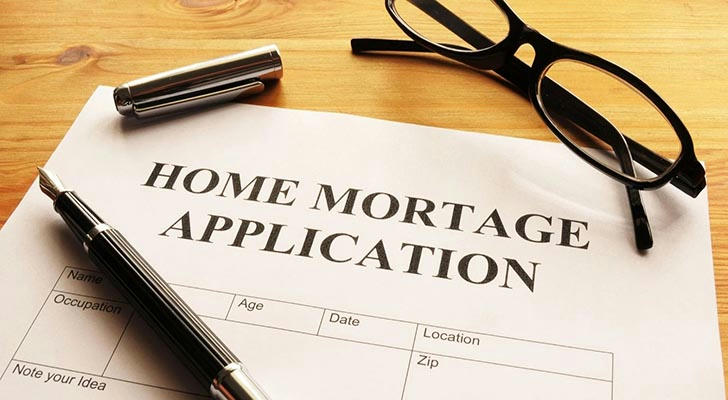Home Loan Guide: Easily Understand the Key Knowledge of Home Loans
Buying a house is an important step for many American families to realize their dream of a safe home, and home loans are the only way for most people to achieve their home buying goals. With the US mortgage rate approaching 7% in 2025, the cost of buying a house has increased, and it has become more important to understand the basic knowledge and process of loans. This article introduces the types of home loans, interest rate changes, application processes, and combines real cases to help home buyers sort out their thoughts and make wise choices.

1. What is a home loan?
A home loan refers to borrowing money from a bank or lending institution to buy a house, with the house itself as collateral. The borrower needs to make monthly repayments in accordance with the contract until the loan principal and interest are paid off. If the repayment is not made on time, the lender has the right to reclaim the property.
The loan term generally has 15 years, 20 years and 30 years. The loan interest rate determines the total cost of repayment, which is mainly divided into fixed interest rate and adjustable interest rate.

2. Common types of home loans
1. Conventional Loan
This is the most common type of loan and is not directly guaranteed by the government. The loan amount has a certain upper limit, which is usually suitable for buyers with good credit and high down payment.
Advantages: low interest rate, flexible loan term, and private mortgage insurance (PMI) can be cancelled after the down payment reaches 20%.
Disadvantages: requires a good credit score, a high down payment ratio, and PMI is required for a down payment below 20%.
2. Jumbo Loan
Suitable for purchasing high-priced properties, the loan amount exceeds the traditional loan limit.
Advantages: can borrow more funds to meet the needs of high-priced houses.
Disadvantages: higher credit requirements, larger down payment ratio, and stricter approval.
3. Government-Backed Loans
Including VA loans, FHA loans and USDA loans, suitable for buyers with poor credit or limited down payment.
VA loans: for military personnel and veterans, no down payment and mortgage insurance are required.
FHA loans: down payment as low as 3.5%, suitable for those with lower credit scores, but mortgage insurance is required.
USDA loan: for rural low-income families, no down payment is required, but there are geographic and income restrictions.
4. Fixed-Rate Mortgage
The interest rate remains unchanged during the loan period, and the monthly repayment amount is fixed.
Advantages: clear budget, no risk of interest rate fluctuations.
Disadvantages: The interest rate is usually higher than that of adjustable-rate loans.
5. Adjustable-Rate Mortgage (ARM)
The initial interest rate is low, and the interest rate will be adjusted according to market changes after the fixed period.
Advantages: low initial monthly payment.
Disadvantages: interest rates and monthly payments may rise, and budgets are not easy to stabilize.
3. Mortgage interest rate trends in 2025
At the beginning of 2025, the US 30-year fixed loan interest rate was close to 7%, which was significantly higher than in the past few years. This means that the monthly repayment amount will increase and the cost of buying a house will increase. The increase in interest rates is mainly affected by inflation and the Federal Reserve's interest rate hike.
In a high-interest environment, loan approval is stricter, and some home buyers may face greater pressure. However, if you choose the loan type reasonably and make a good budget, you still have a chance to realize your dream of buying a house.

4. Loan application process and precautions
Evaluate your financial situation: understand your credit score, income and liabilities, and determine the loan amount you can afford.
Choose the loan type: Choose the appropriate loan product based on your personal situation and home purchase plan.
Prepare application materials: identity proof, income proof, tax bill, bank flow, etc.
Loan pre-approval: Get an estimate of the loan amount in advance to enhance your ability to negotiate for home purchases.
House selection and quotation: Determine the property and submit the quotation.
Formal loan application: Submit complete information and wait for approval from the lending institution.
Loan approval and signing: Sign the contract after approval and pay the down payment.
Transfer and fund release: Complete the property transfer and transfer the loan funds.
Precautions:
Pay attention to interest rate changes and choose fixed or adjustable interest rates.
Understand all fees and avoid hidden expenses.
Refinancing can be considered when interest rates fall, but the cost needs to be calculated.
5. Sharing of real cases
Case 1: Lisa’s first home loan
Lisa has a credit score of 720 and plans to buy a $650,000 apartment. She chose a 30-year fixed-rate conventional loan with a 20% down payment to avoid private mortgage insurance. Despite the high interest rate, she arranged her budget reasonably to ensure that the monthly payment did not exceed 30% of her income. The loan was approved smoothly and she realized her first home purchase.
Case 2: Veteran John’s VA loan advantages
John is a veteran who used a VA loan to buy a house without a down payment and mortgage insurance. The loan approval was fast, the interest rate was low, the monthly payment burden was light, and the quality of life was improved.
Conclusion
Home loans are an important tool to realize the dream of buying a home. Understanding different loan types, interest rate trends, and application processes can help make wise choices. Although interest rates will be higher in 2025, homebuyers can still find a loan solution that suits them through reasonable planning and preparation. Real cases show that a clear budget and the right loan selection are the key to a smooth home purchase. In the future, continuing to pay attention to market changes and flexibly adjusting loan strategies will help more people achieve their goals of settling down.
